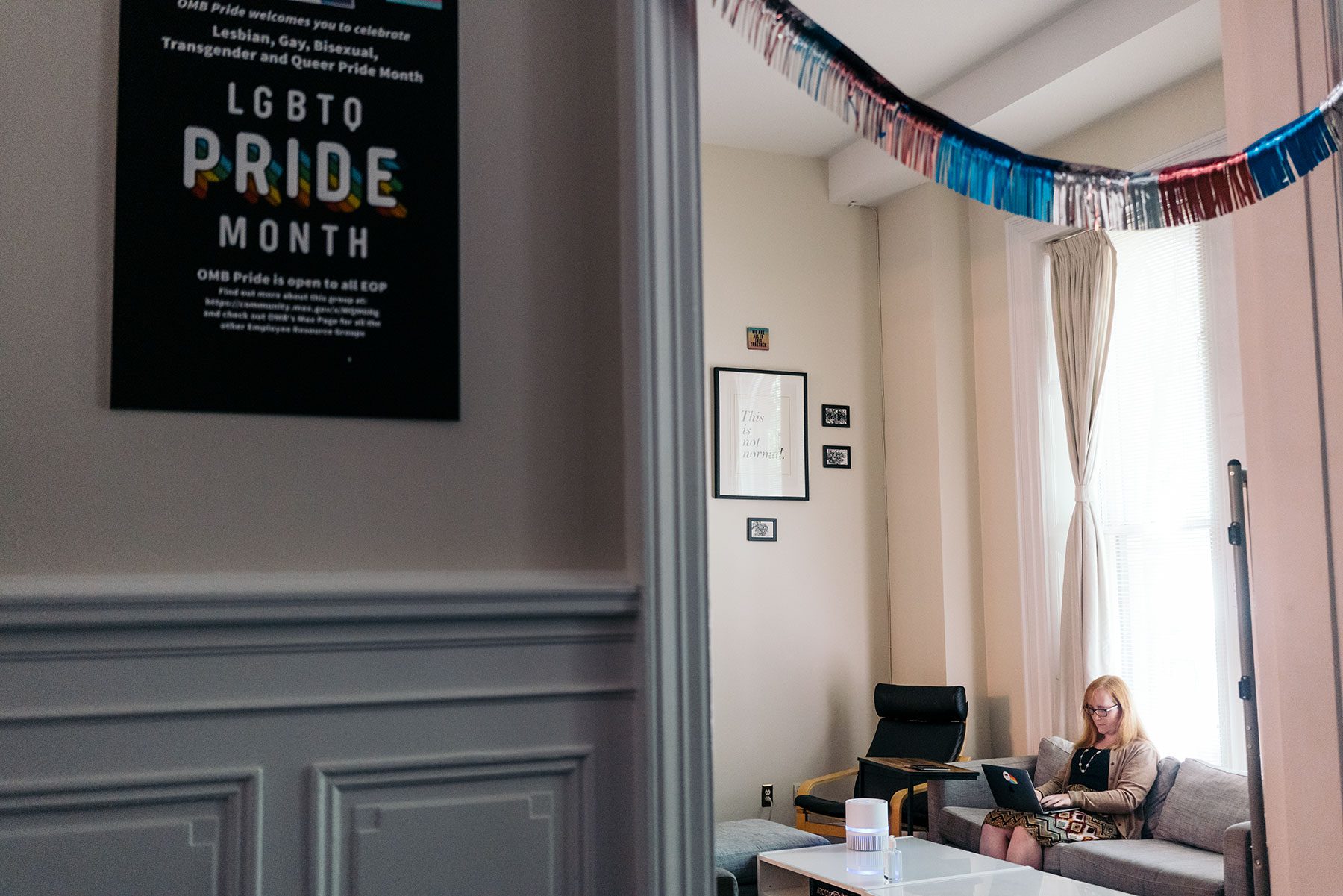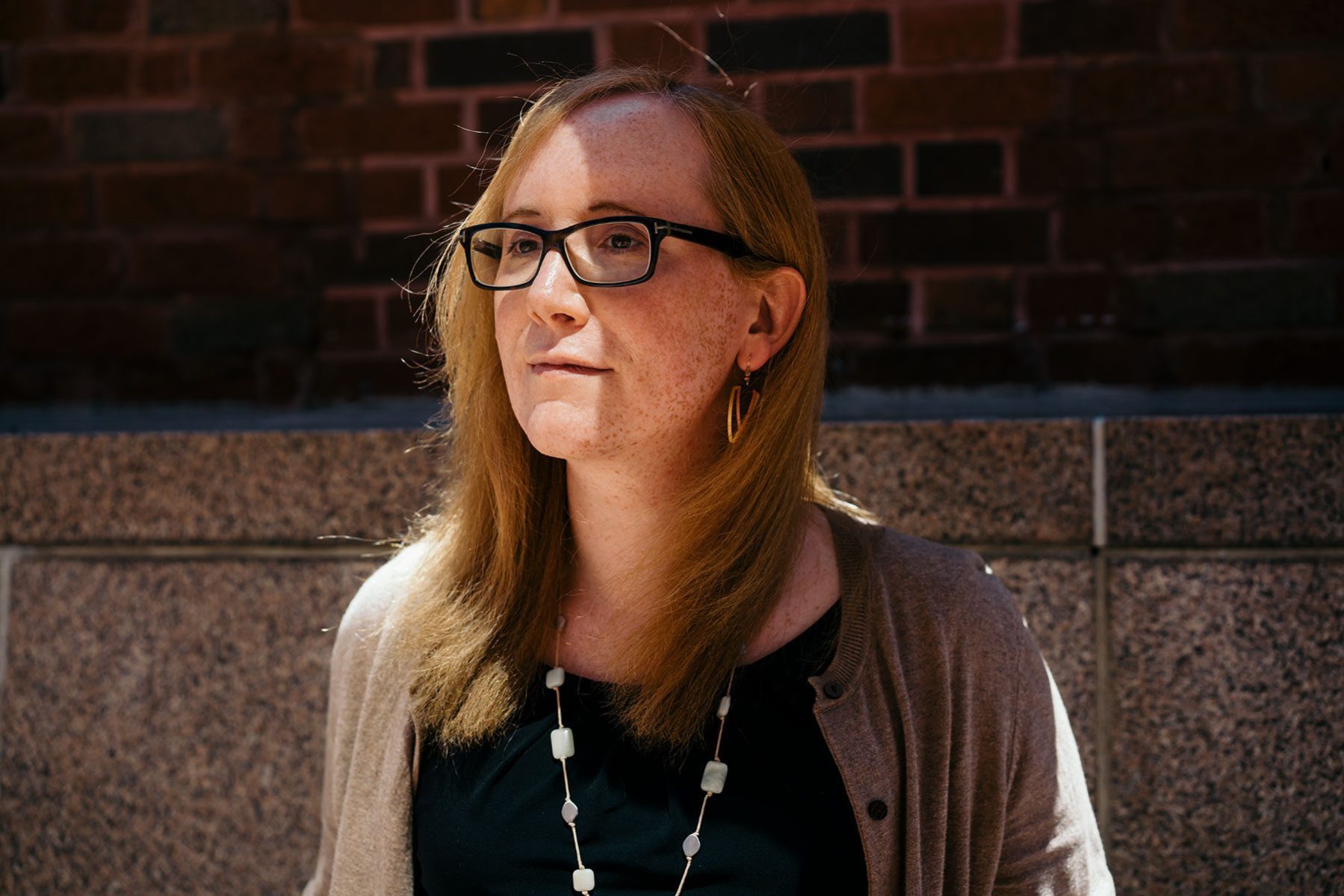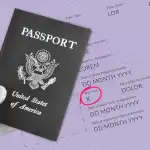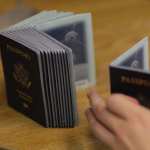If only someone at the White House knew what it was like to be transgender. Airport screenings would get easier. Other trans people would go to work for the president, too. The State Department would finally figure out how to issue gender-neutral passports.
It turns out, someone did know. And she made those things happen.
Amy Paris has quietly served across four presidential administrations. At 42, she is one of the highest-ranking trans people serving in the federal government after Assistant Secretary of Health Rachel Levine.
Most people have never heard of her or the office she works in. Paris is a digital service expert in the U.S. Digital Service, a team of engineers and designers assembled by President Obama in 2014 to modernize government systems after the rollout of the Healthcare.gov website the prior year proved disastrous.
Paris and her colleagues work across federal government agencies to fix the digital forms people use year after year and the documents that reflect who they are. Paris designs solutions that make work a little easier, on paper and in person.
In her role, Paris quietly interfaces with the nation’s top officials. She is often the sole transgender person at the table, and sometimes one of a handful of people briefed on federal policies before they are rolled out. She works with the White House, the State Department, the Transportation Security Administration, and anywhere else in the federal government that needs a practical solution.
“Government should represent the people we serve,” Paris said. “And that does mean having all different types of people working in government.”
This year, the TSA is rolling out new screenings aimed at making flying safer and more comfortable for transgender, nonbinary and intersex travelers. The changes come after years of complaints about TSA scanners that forced security officers to choose “male” or “female” when scanning passengers. For many transgender and intersex people whose bodies don’t strictly align with that binary, the result can be false alarms. An investigation by ProPublica in 2019 found that the gendered scanners disproportionately flagged transgender travelers, leading to invasive and sometimes traumatic searches.
-
More from The 19th
- Senators are pushing TSA to clarify its rules around breast milk and formula at airport security
- Abuse, discrimination, exclusion: Transgender men explain domino effect of losing reproductive care post-Roe
- As Pride month closes, LGBTQ+ advocates are split on whether Biden is doing enough to protect the community
Paris was tasked with helping to implement the new algorithm to reduce those false alarms and unnecessary searches, not just for transgender people, but for all travelers. As a trans woman, she knew how uncomfortable stepping into the scanner at an airport could be. Working on the project to fix that gendered system, she was forced to confront the other side of the scanner in which transportation security officers were called upon to look at each traveler and select either “male” or “female.”
“Within TSA, I was amazed by how dedicated people are to the cause of equity,” Paris said. “There were a lot of people in that room who come from a diversity of backgrounds, diverse ethnic and racial backgrounds, diverse issues involving disability, people who grew up speaking English as something other than their first language, and even other people who are part of the LGBTQ community.”
Security officers told Paris that they also wanted technology that removed false flags. They were not excited to pat travelers down. They wanted to get people through screenings quickly, they told her.
On March 31, Transgender Day of Visibility, TSA announced it was rolling out a new screening process aimed at reducing false alarms as the agency awaits gender-neutral screening technology. Now, when a passenger sets off an alarm, security officers are required to re-screen using both gender options, a move that Paris hopes will substantially lower pat-downs.
For the first time ever, many of those traveling will also have passports that reflect their gender identity. This year, the State Department began issuing passports to trans, nonbinary and intersex Americans with “X” gender markers in addition to “M” for male and “F” for female.
The new markers come after a more than six-year legal battle with intersex Coloradan Dana Zzyym, who successfully sued the Trump administration after being denied a gender-neutral passport they had been granted by the courts. President Biden promised on the campaign trail to issue them.
While many gender-diverse Americans welcomed the prospect of passports with a gender marker “X,” others had serious reservations. Some argued that the federal government should scrap gender markers altogether. However, the United States doesn’t have the authority to remove gender markers; the International Civil Aviation Organization, a United Nations agency, has authority over passport standards worldwide.
People were worried that outing themselves to the federal government as gender-nonconforming wasn’t safe in a climate that increasingly seems hostile to trans people.
“We tried to take that into account when we created the definition,” Paris said.

The “X” would not stand for “nonbinary” but for “unspecified” and could be used by anyone. But Paris shares the worries of her trans peers.
“I’m not gonna lie, it is difficult, working on this issue,” she said. “It’s much easier to work on something like technology policy, because it doesn’t affect me individually in the same way. Working on LGBTQ policies affects me directly. There are days that I’m worried.”
Paris’ approach is unique, say colleagues, not simply because she is transgender, but because she employs high-level problem solving, patience and empathy for every person tasked with implementing a change.
And she is clear that her experience, though valuable, still has limits. She’s White and in her early 40s.
“One thing I really have always respected about Amy is that she’s always been very clear that she is one person in the community, she certainly can’t speak for the entire community,” said Digital Service Expert Danielle Thierry. “But I think that having someone who is part of the community brings a lens that myself or others simply could not bring.”
None of this was guaranteed. Paris hails from Barrington, Rhode Island, a small town that she notes is famous only for its association with a previous White House staffer she declines to name (Trump’s first press secretary, Sean Spicer). She attended public schools and got her graduate degree in International Science and Technology Policy from George Washington University.
She started her career as a teacher at a community college. But as her interest changed, she was drawn to Capitol Hill.
“I just wanted to learn more about how the government worked, but I wasn’t sure that it would be a career,” she said.
Her first job was as a Senate intern during the George W. Bush administration, and she never looked back. She continued her work as a federal contractor, working through the Obama and then Trump eras. She was part of the team that helped implement cloud computing across the federal government in 2011. She helped create the federal IT Dashboard, which tracks spending and deadlines across agencies on information technology.
Finally, in 2020, she joined the Digital Service Full-Time. The role puts her in close proximity to some of the most important decisions facing the White House.
While Paris recognizes the power of that position, she’s not content being the sole trans representative in the room. Making high-level jobs accessible has been a passion of Paris’s, said her colleague William Slack, a product manager and bureaucracy hacker at U.S. Digital Service.
“The experience of applying to a federal job, for a wide variety of systemic reasons, is oftentimes very frustrating and ends with kind of an email saying, ‘You’re qualified but you’re not referred,’” Slack said. Those terms confused applicants, especially those without government experience. Those most likely to miss out on jobs were those from underrepresented groups: LGBTQ+ people, people of color, people with disabilities, veterans, to name a few.
As a trans person, Paris knew what it meant to approach large systems that weren’t built for her, to apply without having an advocate already on the inside. Digital Services wanted to make it easier for people like her and others from underrepresented communities to make it through government applications for technical jobs. Starting in 2018, while still a contractor, Paris got to work on that problem.
“[Amy] was responsible for a process to identify and bring in a large number of data scientists into the government and in doing that, had to advocate for the needs of those people,” said Slack. “In so doing, we have discovered these solutions can be applied to a whole wide range of positions, and not just technical positions.”
Paris hopes that will make it easier for other trans people to work at the White House.
Paris also streamlined unemployment insurance as Americans struggled to go back to work in the pandemic. And she led the discovery sprint last year that informed how the federal government launched new efforts to collect data on LGBTQ+ communities.
Paris came out as transgender in 2017, the same year President Trump tweeted that he wanted to bar transgender people from serving in the military. She continued to work as a contractor.
“It was a lot easier when I came out,” she said. While the Trump administration was generally viewed as hostile to trans people, state legislatures had yet to take up anti-trans bills that would flood chambers starting in 2020. Since that time, states have passed 18 bills that ban trans kids from playing sports and three that block trans kids from accessing recommended medical care.
It’s perhaps for those reasons that few people have heard of Paris until now. She’s been reluctant to take the spotlight as a trans person working high up in government.
“I think it’s a hard time to want to out yourself and to want to say, ‘I’m one of the people who you all are trying to attack.’” she said.
Her decision to be profiled wasn’t easy. But she saw state after state passing anti-trans bills. She knew it might mean a lot to people that there is a trans person working in the White House.
“There are potentially multiple places within government where people who don’t consider themselves part of the mainstream, who don’t consider themselves the average person, could theoretically come in and help contribute and help make this country just a little bit better.”







